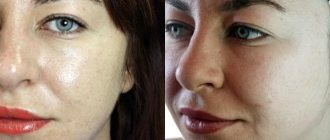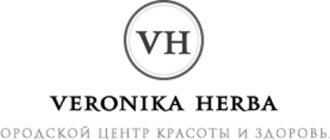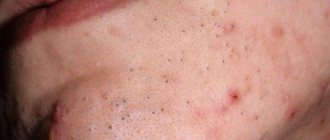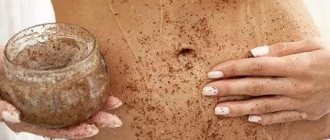Disincrustation of the face educational program
Is there a cleansing method suitable for any skin type, even if it is super sensitive and delicate, if any procedure is perceived as painful?
Disincrustation is widely used in cosmetology, therefore it is used in clinics and beauty salons. It is designed to cleanse facial pores of subcutaneous fat, toxins and external impurities. This procedure, if you have a special device, can be performed both at home and by a professional cosmetologist.
Hardware cleaning is the interaction of direct current pulses and alkaline solutions. Disincrusting mixtures effectively combat greasy stains.
How disincrustation is carried out in the salon, see this video:
https://youtube.com/watch?v=wIZ26DUOs1M
A ten percent special water-based soda solution is applied to the face area; with the help of current pulses, alkali and acid ions are transformed; under the influence of iontophoresis, alkaline ions affect the deep layers of the skin.
Also, these chemical compounds destroy the upper stratum corneum, as a result of which the pores, sweat and sebaceous glands are cleansed.
When is a facial cleansing procedure necessary?
Disincrustation helps to activate cell metabolism and lymphatic drainage due to blood flow.
Thus, it stimulates metabolic processes, normalizes the functioning of the sebaceous glands, removes fine wrinkles, restores the elasticity of the epidermis, its regeneration, and eliminates cosmetic defects on the face.
Indications for use:
- expression wrinkles;
- inactive stage of skin inflammation, acne, comedones;
- oily seborrhea;
- porous skin;
- acne and post-acne;
- lack of skin elasticity;
- pigmentation and signs of aging;
- oily skin.
When disincrustation cannot be done
Despite the enormous benefits, any cosmetic procedure has a number of contraindications.
Contraindications include:
- injury to the face or procedure site;
- inflammatory processes of the facial skin;
- herpes, rosacea, hemangeoma;
- purulent processes;
- dry skin and dry seborrhea;
- blood clotting disorder;
- skin diseases;
- gestosis in pregnant women.
Disincrustation is strictly prohibited for people with diseases: vitiligo - discoloration of the skin; molluscum contagiosum; predisposition to neoplasms in patients with oncology, since current can stimulate tissue growth.
Electric current can also cause a malfunction of the pacemaker. The presence of implants and prostheses made of gold and platinum is also a contraindication.
When skin disincrustation cannot be performed
Any hardware technology has certain contraindications. There is nothing wrong with this, but it is still worth making sure before carrying out the procedure that there are no serious contraindications to galvanic cleaning. First of all, you need to pay attention to such “interfering” factors.
- Chronic pathologies of skin pigment distribution. The most well-known disease that falls under this category is vitiligo.
- Any major inflammatory processes, both on the skin and mucous membranes. How the inflammatory process will behave is unknown. So, it’s better to get rid of it first, and only after that start the procedures.
- Tumors, regardless of location and prognosis. Of course, this primarily refers to tumors of a malignant nature. But even in the case of benign neoplasms, it is better to refuse disincrustation.
- Poor blood clotting. This is a “standard” contraindication to all procedures involving exposure to electric current.
- The presence in the body of implants with metal inserts. This also includes pacemakers.
If your case falls under any of these points, you should avoid galvanic cleaning. Moreover, there are a lot of options for cleansing facial skin. It is not difficult to choose one that is safer and less likely to cause side effects.
Features of the procedure
The essence and mechanism of action of massage on the body
Disincrustation can be carried out in several modes, the intensity of the electrical impulses is determined by the cosmetologist based on the severity of the problems you have, as well as your skin type. The effect of galvanotherapy becomes noticeable after the first session, and a course of procedures will allow you to forget about skin problems for a long time.
Disincrustation of the skin of the face and neck
Galvanic cleaning takes place in several stages:
- Cleansing. To improve the flow of the working composition into the skin, cosmetics, keratinized particles and fatty film are removed from its surface using makeup remover products.
- Application of disinfectant. The working composition can be applied directly to the treated surface of the skin of the face and décolleté or onto a napkin that will be wrapped around the electrode. The second method is preferable, since it will be easier for the cosmetologist to control the remaining substance.
- Action of the working electrode. Two electrodes extend from the galvanic cleaning apparatus. The patient holds one of them in his hand, and the cosmetologist performs the procedure with the other. Moving along massage lines and problem areas, a negatively charged conductor prepares the skin to receive desincrustat.
- Closing pores. Upon completion of the procedure, the cosmetologist changes the polarity of the working electrode to a positive charge and again moves it over the problem areas, thereby closing the pores.
- Calming manipulations. After galvanotherapy, the face and décolleté are massaged, masks or moisturizers are applied.
In general, the work of the electrodes takes about 15 minutes, and the entire galvanotherapy session lasts about half an hour. To enhance and subsequently consolidate the positive dynamics, the cosmetologist will determine the optimal duration of the course and frequency of procedures. As a rule, it is recommended to do 5-10 sessions once a week; if there are severe aesthetic problems, a specialist may advise you to repeat disincrustation every 2-3 months to avoid relapse.
You can learn more about the features of galvanic cleaning and clearly see how the procedure is carried out in a salon environment from the following video:
Disincrustation gel
Electrodes emitting galvanic impulses into the skin are only conductors; the effectiveness of the procedure is determined by the working compositions, which produce the necessary physiotherapeutic effect. Most often used as a disinfectant:
- 5% sodium chloride solution;
- 1% sodium bicarbonate solution;
- 2% sodium salicylate solution.
There are also specialized polarizing alkaline solutions produced specifically for the disincrustation procedure in the form of convenient gels. These formulations are evenly applied to the skin and do not spread, which increases the effectiveness of the introduction of active elements into the skin structure.
Industrial gels for galvanic cleaning contain magnesium and potassium ions, which enhance the positive dynamics achieved during the session. Aloe extract, included among the ingredients by many manufacturers, is designed to moisturize the skin and extinguish inflammatory processes. Another important component of professional disinfectants is polyvinylpyrrolidone, which is an effective sorbent. It binds particles of destroyed contaminants and promotes their high-quality evacuation from pores and ducts.
Side effects and complications
Galvanic cleaning is such a gentle procedure that, as a rule, there are no side effects or complications after it. But in some cases the following may occur:
- new inflammatory elements (due to incomplete opening of pores after the first procedure);
- headache and weakness after the session;
- overdrying of the skin (if the specialist “overexposed” the electrodes or did not use moisturizers after the procedure);
- slight redness.
During the session, some patients feel a metallic taste in the mouth and a slight tingling of the skin in areas in contact with the working electrode.
Facial disincrustation is a popular skin cleansing procedure that combines low cost, optimal effectiveness, and the absence of discomfort during the session and the rehabilitation period after it. The positive dynamics of galvanotherapy can be enhanced by combining it with other techniques that help maintain the healthy appearance and aesthetics of the skin.
Visitor reviews:
| Leave feedback |
| I'm not a bot, I'm a human. |
| Send Cancel |
Leave feedback
inCOSMETOLOGY.ru “Encyclopedia of cosmetology”
Average rating: 0 reviews
Disincrustation in cosmetology: subtleties of the process
The deincrustation procedure, also called galvanic cleansing, removes plugs and normalizes the functioning of the sebaceous glands. It has the following advantages:
- You will forget about problems with dull complexion, but most city dwellers have them. It is enough to spend 10 minutes under the device for the cells to receive the necessary oxygen.
- Galvanic action restores lost skin elasticity. A weak current discharge applied to the face stimulates the formation of new cells. The result is a more youthful appearance.
- Age-related changes are accompanied by the appearance of facial wrinkles. But during galvanic cleaning, the current also affects the muscles, causing them to relax. As a result, wrinkles on the face are smoothed out.
- The method used for disincrustation also involves the destruction of toxins. The skin becomes healthier, and acne problems become a thing of the past.
Disincrustation (another name is galvanotherapy) eliminates not the manifestations, but the causes of emerging problems. This means that the effect will last for a long time, and will not disappear after a few days.
What is the operating principle based on?
To perform cleansing using disincrustation, cosmetologists use the properties of alkaline acids. By combining with the fatty acids that make up the sebaceous plugs, they are saponified, which makes it possible to remove comedones. The process goes as follows:
- A desincrustation solution is applied to the face. Then the skin is exposed to current using a special device. As a result, the active substance breaks down into alkali and acid ions. Thanks to electrophoresis, they penetrate deep into the layers of the skin.
- By reacting with fatty acids, the ions are saponified: the cosmetologist can only wash them off the face with water.
As a result, you not only get rid of impurities, but also get a slight face lift. After all, galvanic current stimulates blood and lymph circulation, which tones the skin.
Indications and contraindications
Disincrustation has found application in cosmetology, because the technique was developed to combat the following problems:
- acne and rashes;
- the presence of scars (post-acne and superficial scars);
- the first age-related changes;
- loss of skin tone, sagging;
- dark circles under the eyes;
- uneven complexion;
- excessive activity of the sebaceous glands;
- clogged pores.
Not everyone can cleanse their skin using disincrustation, as the procedure has contraindications. These include the following:
- the presence of inflammation or wounds on the face;
- rosacea;
- herpes infection;
- oncological diseases;
- bleeding disorders;
- individual intolerance to the components included in the disincrustation gel;
- recent heart attack;
- epilepsy;
- the presence of inflammatory and purulent processes;
- skin sensitivity disorders;
- bronchial asthma;
- the presence of pacemakers or pins in the bones;
- recent chemical peels.
It is not advisable to carry out the procedure a week before critical days and during this period. As for pregnancy, the effect of currents on the fetus has not been studied for ethical reasons. To avoid complications, doctors recommend finding an alternative.
Comparison with other methods
According to reviews of patients who have tried galvanic cleansing, the following distinguishes it from other procedures:
- painless compared to medium or deep peels;
- absence of swelling or redness resulting from alternative types of cleansing;
- deep penetration of components into the layers of the skin.
Since the advantages are complemented by an affordable price, non-traumatic nature and the absence of a recovery period, the popularity of disincrustation is increasing.
Disincrustation: when peelings are powerless
Like many procedures, cleansing is used in combination with other types of treatment. If you complain about acne, you first need to determine the cause. When it lies on the hormonal level, it is useless to take on skin treatment. Therefore, a specialist will solve the main problem, and only then carry out galvanic cleaning to eliminate the consequences.
At subsequent stages, disincrustation is often prescribed in combination with peelings. After all, during the procedure, saponification of sebum lipids occurs: in other words, the plugs are at least partially dissolved. True, peelings cannot be done directly after the procedure, so the schedule must be developed by a specialist. Disincrustation also complements manual cleaning and improves the results of laser exfoliation, so the effect will be complex.
But there are also types of peelings that become a contraindication for galvanization. These include chemical procedures: in combination with the use of electric current, the effect will be too aggressive.
Cosmetologists emphasize that it is important to correctly combine disincrustation with other measures:
- before the procedure, you can do a brosage and treat with the contents of active ampoules;
- Afterwards massage, application of masks, mechanical cleansing of pores, darsonvalization are acceptable;
- Peelings, solariums, massages, mechanical cleansing, myostimulation, and the use of oily masks are prohibited until disincrustation;
- After cleansing, you cannot perform microcurrent therapy or do acid peels.
The procedure is often combined with ultrasound peelings, because saponification of sebum makes it easier to remove plugs.
At home or at a cosmetologist
Shower indications and contraindications reviews. Shower Vichy
Many beauty salon clients often ask questions about home beauty sessions. Disincrustation is a procedure that can be performed either independently or by a cosmetologist.
To effectively cleanse your face at home, you need to strictly follow the instructions and follow the steps in the given sequence.
To maintain the effect of disincrustation, you need to follow a diet, regularly apply face masks of your own or industrial production, and carry out preventive cleaning.
The procedure in a reputable salon, where professionals work, will give quick results. The effect will be visible already at first. After completing the entire course of 10-15 sessions, you can achieve what you want.
The procedure for carrying out the procedure at home using a simple method
You can effectively perform beauty sessions at home, without going to a specialist clinic. Armed with a galvanic device for disincrustation, adhere to the methodology and follow a clear sequence of actions:
- It is necessary to prepare a liquid based on water and soda; you can stock up on a special gel (lotion) for the disincrustation procedure. Soda solution is a budget option, but no worse than factory mixtures.
- Wash and clean your face with a cotton pad to remove any remaining makeup and dust.
- Apply the solution to your face. It is also very effective to make a mask from several layers of gauze, after soaking them in the prepared facial liquid.
- It is necessary to treat the surface of the skin along massage lines. To do this, you need to turn on the device to negative polarity. Ten minutes will be enough.
- Turn on the device to positive polarity and treat your face in the same way. This procedure is aimed at narrowing pores. Ten minutes will be enough.
- Wipe the treated area of the face with a napkin, apply moisturizer for better cell regeneration.
The positive result of such home procedures is achieved in 10-15 sessions. You can repeat the session at least a week later. If your skin type is normal, the procedure can be repeated after three months, and for oily skin – after a month.
Disincrustation in a beauty salon
The procedure is painless and lasts about 20 minutes. The skin cleansing process is divided into stages:
The cosmetologist cleans the surface of the skin from contamination, then moistens the face with a special solution. The skin is treated with a cathode. At this time, the anode is in the patient's hand. Alkaline ions change the skin's pH to be more alkaline, which allows them to fight excess oil secretion from the glands as the skin cell becomes more permeable and blood and lymph flow to the skin more intensely. Thus, skin cleansing and micromassage occurs. Individually, some clients may experience a slight tingling sensation.
The cosmetologist treats the skin with an anode, and the cathode is in the client’s hands
This procedure narrows the pores of the skin due to the outflow of lymph. When treating facial skin, the doctor focuses on problem areas, special attention is focused on the T-zone, since this is where there are a lot of sebaceous glands. If necessary, the cosmetologist combines the procedure with other mechanical or hardware procedures to better cleanse the skin. Dirt is removed with a napkin. A cosmetologist, based on the individual needs of the patient, can treat not only the face area, but also the décolleté area and back, if there are no contraindications to this.
How is skin disincrustation performed using galvanic current?
The entire procedure includes several relatively simple, but requiring the participation of a specialist, stages. For this reason, it is so important to turn to professionals, and there are not too many of them. Good specialists perform disincrustation without minimal danger to the client’s health. The process itself consists of the following stages.
- Superficial skin cleansing. This is the initial stage, the purpose of which is to remove not only dirt on the surface of the skin, but also traces of cosmetics and care products.
- An alkali solution is applied to the skin of the face. Basically, it's just diluted soda. That is, you can prepare the mixture yourself. Ready-made solutions are also used, which greatly simplifies the procedure. But another option is possible - instead of applying the mixture to the skin, a cloth is moistened in it, in which the working part of the electrode is then wrapped.
- Using a nozzle equipped with an electrode, the facial skin is treated with galvanic current. The first step is exposure to a negative charge current. Its purpose is to open pores and eliminate impurities. Movements of the nozzle are made along the massage lines of the face. It is in those places where most of the pollution accumulates.
- The second processing step requires exposure to a positive charge current. It is not intended for cleansing, but to complete the process - closing the skin pores “back”. This is necessary to prevent contamination from accumulating again at a high rate in the future.
- The final stage requires the use of a cream that accelerates skin healing. The product is applied with cotton wool or a napkin.
The total duration of this entire process is about half an hour. For disincrustation to give the best effect, it must be carried out up to ten times. It all depends on how big the defect is initially. Although the number of procedures is large, they themselves are completely painless. The only possible problem is that when exposed to current or due to contact with an alkaline solution, a slight burning sensation may occur.
Peeling effects
Treatment with galvanic current. Indications and contraindications
The condition of the skin is affected by the season, time of day, nutrition and type of products, lifestyle, etc. These changes also change the speed of regenerative processes, the secretion of sebaceous and sweat glands, and the degree of skin contamination.
Excessive dryness leads to faster death of the epithelium and an increase in the thickness of the stratum corneum, and increased secretion of the skin glands leads to excess fat content. All this contributes to blockage of the mouth of the hair follicles and the formation of comedones (blackheads), and contamination and a decrease in the protective properties of the skin - their inflammation and suppuration, the formation of rashes on the face with the subsequent formation of small scars and irregularities.
Cleansing (peeling) procedures help to significantly improve the condition of the skin - removing its upper or upper and deep layers, as well as cleansing the pores of dirt and sebaceous secretions. They are based on the ability of cells to regenerate more quickly (after cleansing), as a result of which the skin becomes smoother and more even, and the face acquires a normal color. In addition to daily home care using cosmetics, it is recommended to carry out peeling from twice a week to once every 1-2 months, as a result of which:
- keratinized epithelial layers are peeled off and removed;
- intercellular pores are released;
- acne is removed;
- facilitates delivery of cosmetics to tissues;
- blood circulation and metabolism are improved, cellular regeneration is stimulated;
- the acidic environment is normalized;
- the protective functions of the skin are restored.
Depending on the depth of impact, all types of facial cleansing are divided mainly into superficial and deep, mechanical, physical and chemical.
Other methods used to supply galvanic current
Galvanic body bath
Sessions typically last from 10 to 20 minutes with a water temperature of 34° C. In treatments that utilize the descending effect of disincrustation, the patient reports drowsiness, heaviness, sedation, and difficulty performing tasks that require full attention (such as driving a car).
Electrolysis
Used in electrical hair removal. The principle of its operation is to change the chemical structure of a substance, up to destruction by an electrical impulse. A positive electrode (cathode), shaped like a needle, is applied to the area to be treated.
Iontophoresis
Using a galvanic current, the drug is administered through the skin based on the effect of electrophoresis, which consists of the rejection of ions of the same polarity as the electrode. The gel used contains key ingredients that carry a positive or negative charge, and the machine is programmed to carry the same charge as the gel.
During treatment, the polarity of the direct current (positive or negative current) pushes or pushes away charged molecules as we move the instrument to impact the epidermis.
Hyperhidrosis
Treatment of excessive and localized sweating in certain areas of the body, mainly on the soles of the hands and feet. The affected areas of the body are lowered into a container of drinking water, each of which uses a conductive rubber electrode (non-metallic).
Disincrustation - new, but well forgotten old
The market for cosmetic procedures today is steadily expanding. And now cosmetologists show us another innovation called “disincrustation”.
Let's figure out what it is.
A little history. At the dawn of the 19th century, the German physicist Johann Solomon Christopher Schweigger, inventing the galvanometer device, hardly suspected, of course, that the essence of the processes on which the operation of the device is based would form the basis of a cosmetic procedure in the 21st century. But the fact remains that it happened.
Disincrustation is a therapeutic and prophylactic procedure that uses the beneficial effects of low-strength and low-voltage electric current on the skin; in essence, it is deep cleansing of the skin.
During the procedure, a chemical reaction occurs - fatty acids of the sebaceous glands react with alkalis, as a result of the reaction that occurs, a well-rinsed soapy substance is formed, which perfectly helps to get rid of clogging of the sebaceous glands with fat plugs and other physiological contaminants.
By and large, the widespread use of the disincrustation procedure is due to the fact that the removal of fat secreted by the skin is carried out much more effectively when it is dissolved, which occurs as a result of a chemical reaction during the procedure.
Disincrustation is widely used for the following skin problems:
- increased fat content,
- comedones are cystic formations that occur in places where hair follicles are blocked by horny particles,
- small early wrinkles,
- acne,
- seborrhea.
However, there are also contraindications that need to be taken very carefully: vitiligo - a disorder of skin pigmentation (lightened spots), neurotic excoriations - scratched areas of the skin caused by neurotic reactions, molluscum contagiosum - a disease caused by the smallpox virus, the presence of a pacemaker, the presence of platinum prostheses and gold, since during the procedure ions of these metals can be knocked out, which is far from harmless to health, static (age-related) wrinkles, otherwise they are called gravitational wrinkles, that is, formed under the influence of gravity on tissues weakened by age.
It should be noted that there are enough subtleties in carrying out the procedure for each specific case, so the presence of the device in the salon is not the most important condition. The procedure must be carried out by a professional cosmetologist, since it is necessary to know what alkalis are used for certain cases, what compositions are used to treat the face after the procedure, what electrodes should be used and for what purpose during manipulations
Disincrustation on the face can last from 5 to 10 minutes. The number of sessions can vary from 6 to 20 procedures.
Take a look here too:
- How long can you actually store cosmetics?
- How can you cleanse facial skin prone to rosacea?
Are there any contraindications for disincrustation cleaning?
Like any other hardware facial cleansing, disincrustation has factors that prohibit the procedure.
Such contraindications include, first of all, various skin diseases, as well as other diseases of the body and other factors:
- vitiligo (pigmentation disorder in certain areas of the skin);
- malignant formations on the skin or inside the body;
- molluscum contagiosum (viral disease);
- severe inflammatory processes on the skin;
- chronic diseases of the skin and mucous membranes;
- serious problems with the heart and blood vessels;
- blood incoagulability;
- the presence of pacemakers, gold or platinum prostheses.
If you have any of the problems listed above, it is better not to do facial disincrustation; choose some other type of hardware facial cleansing. And if there are no contraindications, you can try galvanization, because now you have already understood the intricacies and details of this procedure.
— Author — Tatyana Maltseva, website www.sympaty.net – Beautiful and Successful Copying of this article is prohibited!
general information
Superficial cleansing
This type of cleansing is the most gentle and gentle, as it is limited to affecting only the stratum corneum and granular (with chemical peeling) layers of the skin. It is recommended to use it in young and middle ages (up to 40 years), when the skin is not yet subject to significant changes. As a result of superficial exposure, the stratum corneum is exfoliated, blood microcirculation is improved, tissue turgor and elasticity are increased, fine wrinkles are eliminated, and the face becomes smoother.
Superficial cleansing promotes healing and rejuvenation of the skin without causing inflammation, redness and irritation. It can be used independently at home. The main procedures for surface peeling include chemical treatment of the skin using milk, tonics, gommage, paste masks, scrubs, fruit and other acids; mechanical exfoliation (microdermabrasion, brushing) and vacuum cleaning; physical impact using ultrasound or fractional dosed erbium laser (laser peeling).
Superficial cleansing is indicated for oily skin, acne, pigmentation, keratosis, unexpressed age-related changes and for the purpose of their prevention.
The procedure affects the entire epidermal layer. This procedure is very aggressive and traumatic, but quite effective. It is used mainly in people over 40 years of age with gross changes in the skin structure - deep wrinkles, stretch marks, small scars, pigment spots and other signs of skin aging.
The meaning of the method is to use concentrated trichloroacetic acid or phenol, which are applied to the skin after local anesthesia (due to the pain of the procedure). As a result, a burn is formed, followed by inflammation and detachment to the papillary and reticular layers of the skin itself. Over the next 2-3 months, its regeneration occurs. The skin is restored along with collagen and elastic fibers, looking firm, moisturized and smooth.
Due to the difficult control of the process and the toxicity of the drugs, deep peeling is used relatively rarely and to a limited extent. It is contraindicated for pregnant women, people with heart, kidney, liver and other chronic diseases.
Physiotherapeutic method
It is carried out to soften deep sebaceous plugs and normalize the acid-base balance of the skin. The effect is carried out by galvanic current and special alkaline solutions.
Given the wide variety of types of cleanings and their combinations, many people naturally ask: “Which cleaning is the most effective?” The most popular procedures are those aimed at removing keratinized epithelium, impurities, blackheads and comedones. These include mechanical exfoliation (scrubs, brosage), soft professional and home peelings, mechanical (manual) cleaning sessions, non-aggressive physiotherapeutic and hardware techniques. This is due to their availability, ease of implementation and the absence of a rehabilitation period.
Galvanic facial cleansing at home - features of the devices
Disincrustation is a safe cleaning method, so it is permissible to carry out the procedure at home. For this you will need:
- special apparatus;
- alkaline solution (water and soda in a ratio of 10/1).
Specialized stores offer a wide range of devices. The devices vary in cost and functionality.
Gezatone Galvanic Beauty SPA m775
The device has 4 programs, each of which solves specific skin problems. Description of programs:
- ION+ - cleansing, exfoliating, supplying cells with oxygen.
- Massage - moisturizing, toning, reducing wrinkles, saturating cells with oxygen.
- ION - supply of nutrients into the deep layers of the epidermis, absorption of nutritional and moisturizing components, increasing the effectiveness of cosmetics.
- Lifting - fights sagging and sagging, loss of firmness and elasticity.
Gezatone Ionic – Ultratonic model m365
The device combines galvanic and microcurrent functions. Designed to correct age-related changes and face lift. Each type of current has a specific effect on the skin:
- Galvanic current - active production of collagen and elastin fibers, cleansing and narrowing of pores, reduction of wrinkles.
- Microcurrents - increasing the tone of muscle skin, correcting the oval of the face, improving the condition of blood vessels, eliminating puffiness, combating fat deposits and a double chin.
Gezatone Cream Booster m805
The device combines galvanic currents, light therapy and vibration massage. Each technique performs specific functions:
- Galvanic currents - cleansing and shrinking pores, normalizing the functioning of the sebaceous glands, lifting effect, replenishing the lack of nutrients and moisturizing substances.
- Soft vibration massage - preventing the appearance of wrinkles in the area around the eyes, shallow folds around the lips and on the forehead, increasing tone and elasticity.
- Light therapy - stimulation of restoration processes and collagen synthesis, prevention of age-related changes, slowing down the aging process.
Features of the further facial care procedure
In order for the positive effect of galvanic cleansing to remain on your face for a long time and continue to please you, you should follow simple tips:
- It is better to use skin cosmetics designed specifically for care after decontamination sessions.
- The skin has been treated, so redness may occur after the procedure. It will take 3 days to restore the natural color.
- Disincrustation of the face is not carried out a week in advance or during critical days.
- To consolidate the result, you can use homemade masks. For oily skin, clay is better; for dry skin, sour cream.
- Power control. Do not overuse sweet, floury, smoked and spicy foods - all this leads to the formation of a rash.
- Remove cosmetics from your face in a timely manner; it is better to use natural and environmentally friendly ones.
- If disincrustation is not effective, you should seek advice from an endocrinologist and nutritionist, since the rash may not be a cosmetic defect, but a consequence of internal problems of the body.
What is disincrustation and when is it used? This video will tell you:
What is disincrustation
Cosmetologists call this procedure a “non-surgical facelift.” Galvanic facial cleansing uses medium-strength direct current to stimulate cells, soften tissue, and seamlessly introduce medications or creams into the deeper layers.
The result: detoxified pores, improved hydration, blood circulation and lymph node function.
Don't worry, this is a completely painless procedure - you won't feel a thing!
What is the essence of galvanic cleaning and disincrustation?
Hardware desincrustation is a method that allows, using devices, to deeply and effectively cleanse the skin of excess fat and impurities. This method is suitable even for people with sensitive and too delicate skin.
Such deep cleansing of pores from all kinds of impurities and fat plugs can be achieved by introducing alkaline disinfectants into the skin, and they will be introduced under the influence of direct current. Despite the fact that this sounds somewhat scientific, it is very simple to explain - the fat found in our skin, consisting of triglycerides, undergoes a saponification reaction and is easily removed. For this purpose, apply a 10% solution of baking soda (sodium bicarbonate) to the surface of the face. It is best to use special professional alkaline solutions that contain magnesium and potassium ions, as well as aloe extract.
Indications
Galvanic currents and constant displacement of the electrode in the form of a roller along the main massage lines during this procedure will promote blood flow, lymphatic drainage, improvement of metabolic mechanisms in tissues, normalization of the general secretion of the sebaceous glands, as well as activation of blood circulation. Regular implementation of this procedure will have a beneficial effect on the rate of cell regeneration, smooth out fine expression wrinkles, eliminate acne and acne, improve complexion, and increase the elasticity of facial contours and skin.
In this regard, the following indications for disincrustation can be mentioned:
- — the procedure is perfect as a regular cosmetic treatment;
- - porous, combination, oily skin;
- - all kinds of oily seborrhea;
- — acne without typical signs of inflammatory processes;
- - comedones, acne, post-acne;
- — signs of aging, including facial wrinkles;
- - impaired pigmentation.
Contraindications
Despite the huge number of advantages of this procedure, it, like any other cosmetic method, has its own contraindications, which include:
- - inflammatory processes of the skin, especially if they are purulent in nature, molluscum contagiosum;
- - any traumatic violation of the integrity of the skin (scratching, cuts);
- - rosacea and hemangiomas, herpetic rash, dry seborrhea and general dry skin;
- - blood clotting disorders;
- — chronic skin diseases at the site of intended use;
- - presence of a pacemaker;
- - gestosis of pregnant women.
Stages of galvanic cleaning
How is facial skin desincrustation carried out? So, usually all dermatologists and cosmetologists follow the following cleaning protocol:
To begin with, prepare a 5 or 10% aqueous solution of ordinary baking soda, or prepare a professional gel or lotion for disincrustation.
Next, you need to use a cosmetic disc to cleanse the skin of cream, makeup and other surface contaminants.
After this, the cosmetologist should wrap the active electrode with a napkin previously soaked in disinfectant. If the procedure is carried out at home, you can use a simple soda solution, gel or lotion.
The device turns on the negative polarity of the electrode and treats the face along all massage lines.
Next, the polarity must be changed to positive, after which the entire procedure must be repeated to achieve a decrease in the porosity of the skin.
The face is wiped with a disc and an intensive restorative agent is applied.
Each procedure with negative and positive polarity should be carried out for 10 minutes. The course of treatment ranges from seven to ten sessions. Depending on the skin, such sessions must be performed every 7-10 days. After this, it will be possible to perform one-time inlays for prevention at intervals specified by the dermatologist. For example, if the skin is excessively oily, then preventive cleansing should be done once every 1-1.5 months. For normal skin, cleaning will be needed every 2-6 months.
Advantages of the method
Compared to other cleaning methods, galvanic cleaning has a number of advantages, which include:
- - relative painlessness, lack of discomfort;
- — deep cleansing of the skin without subsequent redness and swelling;
- - normalization of the secretion of the sebaceous glands.
Finally, it must be said that galvanic cleansing can be carried out both as an independent procedure and in combination with other types of cosmetic care, which, by improving its effectiveness, will help keep the skin beautiful and healthy for as long as possible.
Contraindications and possible side effects
Contraindications to galvanic cleaning are as follows:
- inflammation in the treated area;
- purulent elements;
- rosacea;
- dry seborrhea;
- very dry skin;
- injuries and open wounds on the face;
- vitiligo (loss of natural pigment in the dermis);
- hemangioma (benign tumor-like growth consisting of vascular tissue);
- hypertension;
- ENT pathologies (sinusitis, frontal sinusitis and others);
- oncological diseases;
- diseases of the circulatory system;
- urolithiasis disease;
- blood clotting disorder;
- use of pacemakers;
- skin diseases in the chronic stage;
- pregnancy;
- increased sensitivity to current;
- the presence of any metal elements in the treated area (crowns, etc.);
- elevated body temperature.
In the absence of contraindications, the procedure does not cause harm.
However, if the implementation technology and care recommendations after disincrustation are not followed, complications are possible:
- redness;
- swelling;
- dryness and flaking;
- itching;
- strengthening the work of the sebaceous glands;
- allergic reaction.
Some women experience a metallic taste in their mouth after galvanic cleaning.











